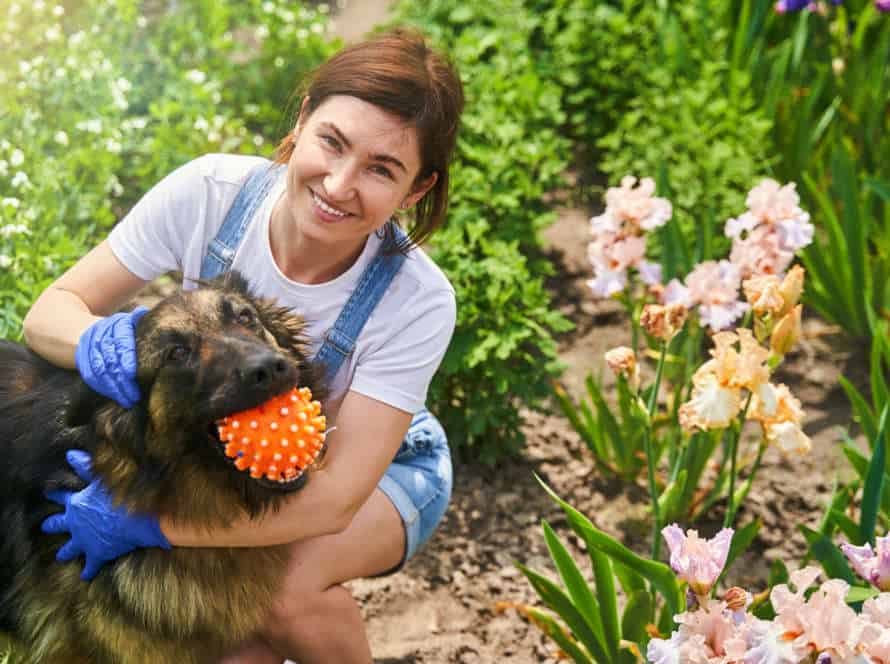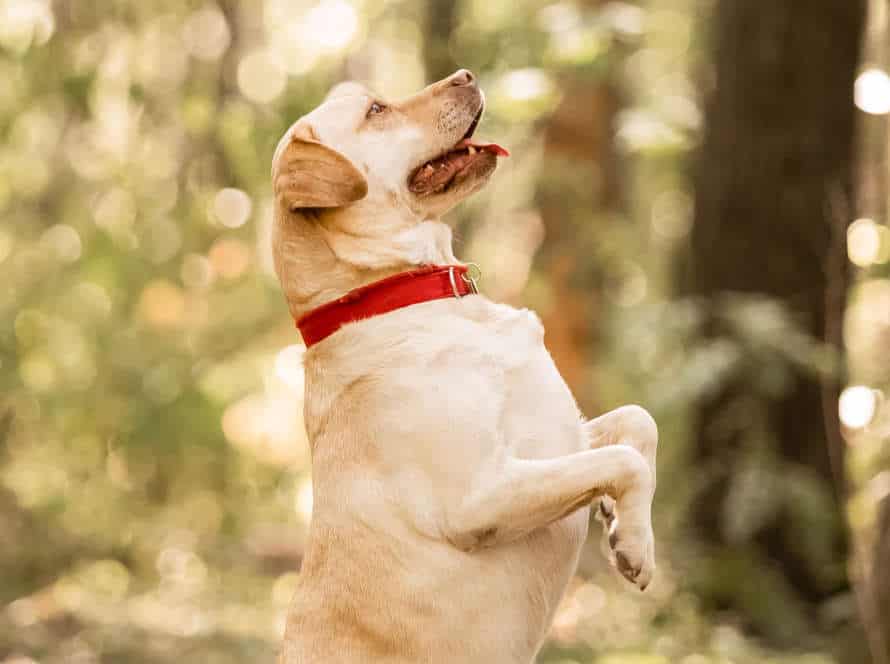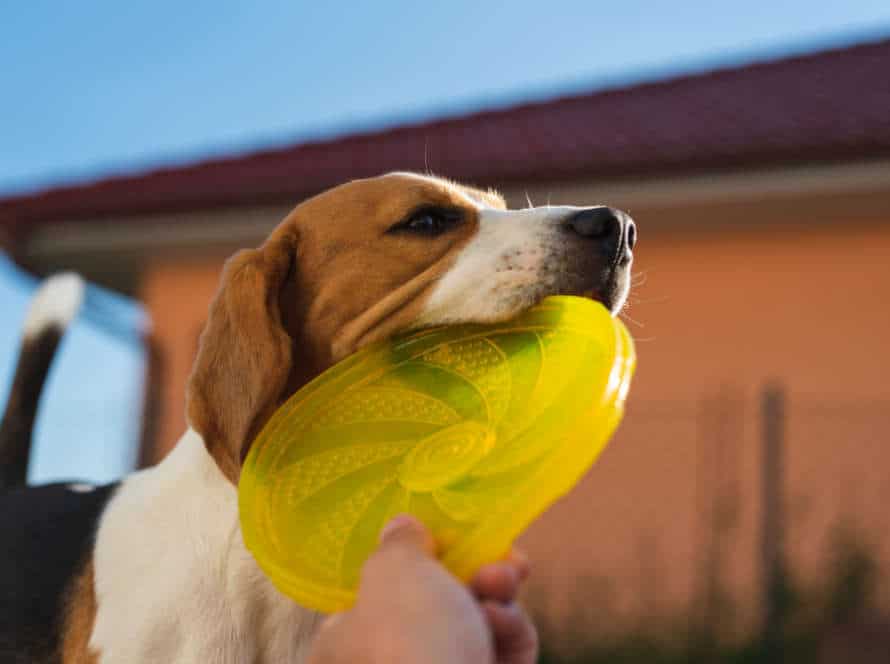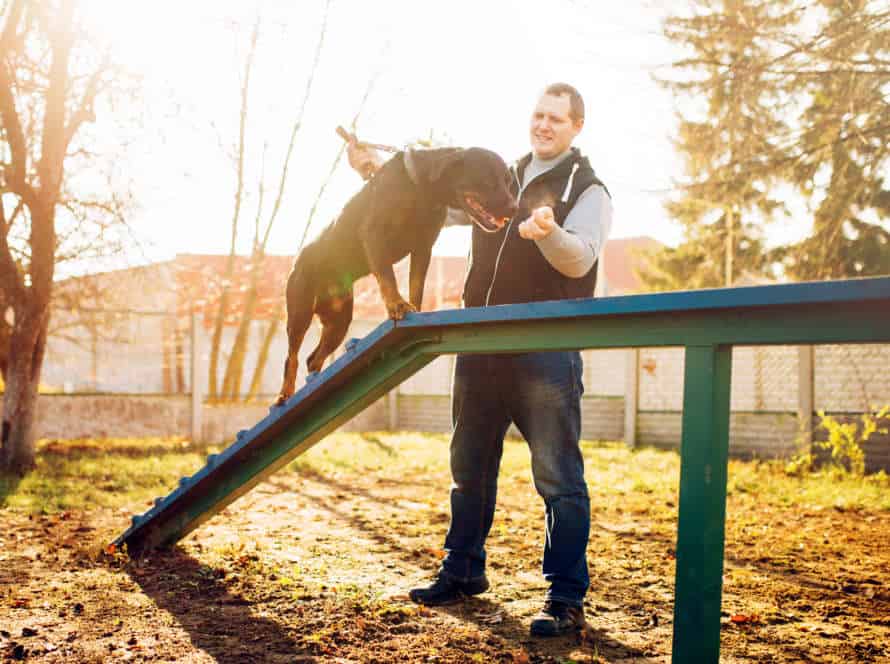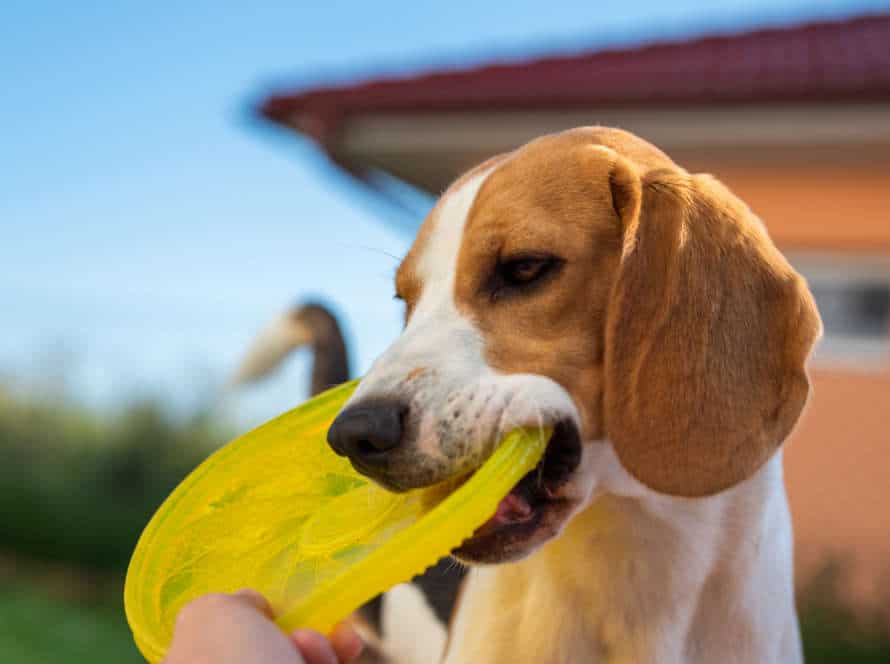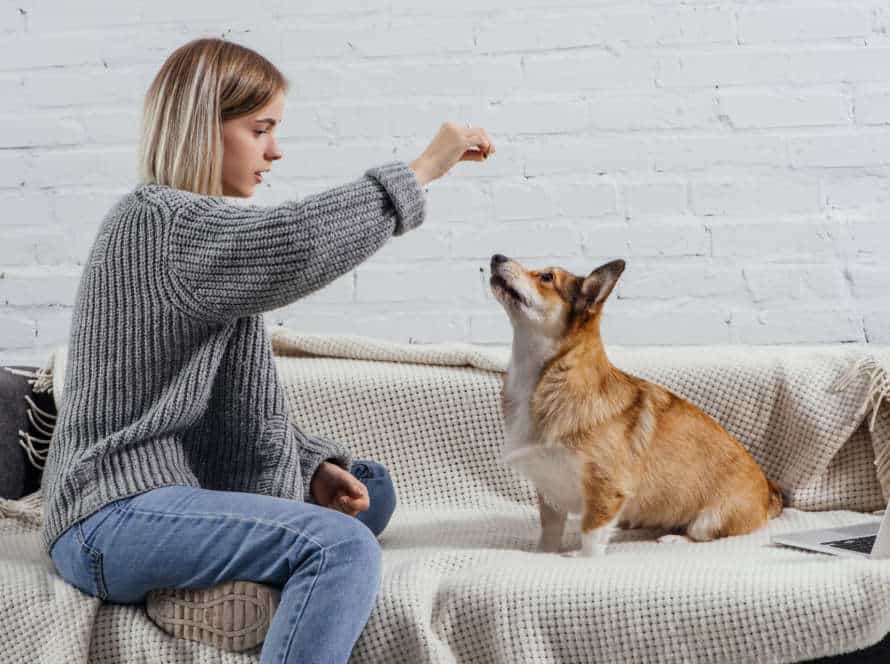Puppy Trick Training: Building a Solid Foundation
Training your pup in tricks is a great experience for both you and your pup. Building a solid foundation is key for successful trick learning. Here are tips for this:
- Start with basic commands like “sit,” “stay,” and “come.”
- Use treats, praise and playtime to motivate.
- Keep training short and consistent.
- Practice in different places.
- Be patient and make it fun – puppies learn best when they’re having a blast!
These tricks can help your pup do more complex ones like shake, roll-over, play dead and fetch later on.
Basic Commands to Master Before Starting Trick Training
Before teaching any tricks, it’s vital to build a strong foundation of the basics. This includes teaching sit, stay, come, down, no, and leave it. For success, you need 100% reliability with these commands. Without a solid foundation, teaching tricks could be frustrating for both you and your pup.
Let’s take a closer look at each command:
Sit, Stay, and Come Commands
Sit, stay, and come commands are essential for a pup’s training. Teach them like this:
- Hold a treat above their nose, and move it up. They’ll sit to look at it. As soon as they do, say “sit” + give the treat.
- Once they know sitting, tell them to sit and hold your hand out, saying “stay”. Step back a few feet, say “good stay” and reward them. Increase the distance and time.
- For come, put them on a leash and say “come” with a gentle tug. Praise and treat when they come. Increase the distance and distractions.
Pro tip: Keep training sessions short and cheerful. Always finish with treats and praise.
Practicing Basic Commands in Different Environments
Before beginning trick training, it is vital to understand some basic commands. Doing these commands in multiple places will help your pup form a strong base for trick training in future.
Here are some commands your pup should know:
- “Sit”: Hold a treat near their nose and lift it up & over their head. As they follow it, their bottom should lower to ground. When it touches the ground, say “Sit” and give them the treat.
- “Stay”: Ask pup to sit, then hold a hand up and say “Stay”. Step back slowly. If they remain in position, give them a treat & verbal praise.
- “Come”: Call their name with a happy tone. When they come to you, say “Come” & give them a treat.
Do these commands in different environments such as indoors, outdoors, in public places and your backyard, so pup is comfortable obeying your commands in various situations.
Pro tip: Establish a strong foundation of basics first. Understanding the fundamental commands will help your pup to learn advanced tricks more easily.
Developing Positive Reinforcement Techniques
Before beginning trick training, it’s important you have a firm understanding of basic commands your puppy can easily obey. Here are the top five essential commands to help form a strong basis for trick training:
- “Sit”: Necessary for developing impulse control and calm behavior. Makes it easier for them to learn other commands.
- “Stay”: Teach your puppy to remain in a seated or lying down position until released. Also helps develop impulse control and obedience.
- “Come”: Builds recall behavior, vital for your puppy’s safety in public spaces.
- “Leave it”: Instructs your puppy to ignore distractions and not touch forbidden objects or substances.
- “Heel” or loose leash walking: Teach your pup to walk peacefully and obediently on a leash, without pulling or lunging.
Achieve mastery of these basic commands and you’ll have created a strong foundation for trick training! Pro Tip: Use rewards or compliments to reward positive behavior and make training more enjoyable for your puppy!
Understanding Your Puppy’s Learning Style
Training a pup is not simple. To succeed, you need to get a handle on their learning style. Every puppy is different and grasping what works best for your pup is key. Let’s look at the various puppy learning styles and the best way to teach them.
Identifying Your Puppy’s Motivation
Recognizing your pup’s inspiration is essential to fathom their learning style and succeed in stunt preparing. Here are some hints to assist you with acknowledging your puppy’s motivation:
- Watch your puppy’s conduct towards various rewards, such as treats, toys or acclaim. Spot which reward energizes them the most and keeps them locked in during preparing meetings.
- Test with various treat flavors or surfaces to check whether your puppy reacts better to a specific sort of treat.
- Incorporate games and toys that your puppy appreciates in preparing meetings to keep them propelled.
- Remember to be understanding and reliable in your preparation methodology, as each puppy has a novel learning style and may expect various inspiration strategies.
Adjusting to Your Puppy’s Learning Pace
Training your pup needs patience and understanding. Each puppy has its own way of learning. Here are some tips:
- Observe your pup’s behavior and create a training plan that works for their learning style. Some pups learn better visually, others with verbal cues.
- Break down the training into smaller pieces. Reward the pup for its progress.
- Be consistent and don’t use punishment or negative reinforcement.
- Positive reinforcement like treats, toys, and praise will help the puppy learn.
- Adapt your pace to your pup’s age, breed and temperament.
By following these tips and staying positive, you can make a strong foundation for trick training. It will benefit you and the pup.
Recognizing Signals of Overstimulation or Fatigue
To get started with puppy trick training, you must first understand your pup’s learning style. And, be on the lookout for any signs of overstimulation or exhaustion. These include: drooping ears/tail, panting/yawning, fidgeting/whining/growling (overstimulation), and lying down/sitting/refusing to engage/disinterest/decreased response (fatigue). By being aware of these signals, you can adjust the training accordingly. Plus, give your pup time to rest and recharge. This will boost their motivation and strengthen your bond!
Teaching Tricks: Building a Step-By-Step Plan
Teaching your pup tricks can be fun and rewarding! But, to make sure of success, create a foundation first. Here, we will talk about how to make a step-by-step plan. By following these steps, you can help your pup reach the trick training goals.
Defining Your End Goal
When teaching tricks to your pup, it’s key to have an end goal. Here’s how:
- Pick the trick you’d like to teach.
- Break it into parts.
- Figure out what behavior/action you want your pup to do in each part.
- Use rewards for good behavior.
- When they master each part, combine them for the full trick.
By setting a goal and breaking down the trick, you can teach your pup to do it and be ready for future tricks.
Breaking Down the Trick into Achievable Steps
To teach tricks and make pup trick training solid, breaking down a trick into smaller steps is essential. So, here are the steps to make a plan:
- Decide what trick to teach puppy and what behaviors or actions are needed.
- Figure out how pup learns best and what motivates them.
- Split the trick into smaller, simpler sections which can be taught one at a time.
- Create a plan for each step with achievable goals and timelines.
- Train pup by teaching each step in a positive and encouraging way.
- Put the steps together to finish the trick.
By following these steps, pup trick training will be strong and tricks will be successfully taught.
Combining Steps for a Successful Trick Performance
Teaching tricks to puppies can be fun and stimulate their minds and bodies. To achieve results, create a step-by-step plan. Do this:
- Start with easy ones. Try commands like ‘come‘, ‘sit‘, and ‘stay‘ first.
- Reinforce good behaviour. Give treats and positive words after each trick.
- Make it harder. When your puppy masters the basics, move on to tougher ones.
- Add hand signals and voice commands. Teach your puppy to respond to both.
- Break it down. Separate tricks into small, doable steps and train them one by one.
Remember: Consistency and patience are vital. Spend a few minutes each day and be generous with rewards.
Advanced Trick Training and Problem Solving
Ready to take your pup’s trick training to the next level? Advanced trick training and problem solving involves teaching your pup more complex tricks and behaviours, plus identifying and fixing any issues. Here’s what to do:
- Build your pup’s foundation for trick training.
- Move on to more advanced levels.
- Teach your pup more challenging tricks and behaviours.
- Identify any issues that arise.
- Troubleshoot and resolve the problems.
Improvisation for Trick Training Success
Improvisation is vital for improving your pup’s trick-training success. To build a strong base for advanced tricks and problem-solving, you must accept improvisations. Here are some expert tips to get started:
- Include different objects in your training. For example, put a hoop on the floor and show your pup how to jump through it. Or use a target stick to teach them to touch an object.
- Change up your rewards. Try toys, treats, or verbal praise to keep your pup interested and motivated.
- Switch up your training location. A new environment can keep your puppy mentally stimulated and excited to learn.
- Teach your pup to generalize cues. Instead of teaching them one trick in one setting, make sure they can do it in different settings and places too.
By embracing improvisation, you will keep your puppy’s training sessions entertaining and difficult. This will also help them become flexible, well-rounded and good at problem-solving.
Handling Common Trick Training Obstacles
Tackling advanced tricks with puppies can be challenging. Here are some tips to help you stay on track:
- Struggling with focus? Offer yummy treats, train somewhere quiet and familiar, and practice focus exercises.
- Fearful or anxious pup? Minimise stressors, reward good behaviour, and start with simple tricks.
- Distractions? Introduce distractions gradually and use “leave it” and “stay” commands to regain attention.
- Too excited? Take breaks, use calming techniques such as deep breathing and massage, and make sure your pup gets enough exercise and rest.
By addressing obstacles in a positive and consistent way, you can build a good foundation for trick training, and foster a strong bond with your pup.
Advanced Trick Training Techniques for Unique Tricks
Trick training that’s advanced needs patience, consistency, and creativity. Here’s how to teach tricks that are unique to your dog:
- Shaping: Split complex behavior into smaller steps. Reward your dog for each step. For instance, teach your dog to jump through a hoop. Give them rewards for touching the hoop, for putting their head through it, and for completing the behavior.
- Target Training: Use a target, like a stick or tape, to guide your dog’s behavior. For example, to get your dog to spin, hold the target and lure them in a circular motion until the spin is done.
- Chaining: Link multiple behaviors for a complex trick. To teach your dog to fetch and put away toys, first train them to retrieve it, then have them drop it in a basket, and lastly, have them release the toy into the basket with a command.
Remember, keep training sessions short, positive, and enjoyable for your dog. Reward them for efforts and progress.
Pro tip: To keep your dog interested, switch up the treats and rewards and train in different locations – this will make it exciting.
Tricks for Fun vs. Tricks for Practical Use
Training your pup can be a fun way to bond and provide entertainment. But there’s a difference between teaching them tricks just for fun, and teaching them practical tricks. Let’s look at the pros and cons of each!
- Fun tricks give joy and laughs.
- Practical tricks are useful, but require more effort.
So, decide what works best for you and your pup!
Balancing Fun Tricks and Valuable Commands
Train your pup by striking a balance between fun tricks and valuable commands. This will create a solid foundation of obedience and training.
For fun, teach your pup tricks like ‘roll over’ and ‘give paw’. But, don’t prioritize them over commands like ‘sit’, ‘stay’, ‘come’, and ‘heel’. These are essential for safety and building a happy relationship.
To build a solid foundation, use a balanced approach of fun and useful commands. Be consistent and use positive reinforcement, treats, toys and praise.
Incorporating Trick Training into Everyday Life
Incorporate trick training into everyday life! It’s a fun way to bond with your pet, plus teach them valuable skills.
“Roll over” and “play dead” can be used as mental stimulation and to interact with your pet.
“Sit” and “Stay” can be used to reinforce good behavior, and improve communication between you and your pet.
To train your puppy or dog, build a solid foundation by starting with basic commands.
Be patient and consistent. Your pet can become a well-trained, well-behaved member of your household. Pro Tip: Use positive reinforcement and patience when trick training your pet.
Using Trick Training for Mental Stimulation and Entertainment.
Trick training is a great way to give your pup mental stimulation and fun! There’s a difference between tricks for pleasure and those that have a purpose. Tricks for pleasure are like rolling over, playing dead, or giving a high-five. These can help bond with pup, build confidence, and offer mental stimulation.
Tricks with a purpose? Fetching, opening doors or drawers, and turning lights on/off. These can be useful for disabled dogs, service dogs, and in everyday life.
Before teaching advanced tricks, make sure pup has a strong foundation of obedience and communication in place. That includes basic commands like: Sit, stay, come and heel. Plus, they must respond reliably to your commands.
Pro tip! Make sure to keep trick training fun and positive with treats, praise, and plenty of play and rest breaks.
Frequently Asked Questions
Q: What age should I start training my puppy?
A: Training can start as soon as you bring your new puppy home, usually around 8-10 weeks old. It’s important to start early so your puppy can build a strong foundation for good behavior.
Q: What are some basic tricks to teach my puppy?
A: Some basic tricks include sit, stay, come, down, and leave it. These tricks will provide a foundation for more advanced training in the future.
Q: How long should training sessions be?
A: Puppies have short attention spans, so training sessions should be kept to 10-15 minutes at a time. It’s better to have multiple short sessions throughout the day than one long session.
Q: How do I reward my puppy for good behavior?
A: Positive reinforcement is the best way to reward your puppy for good behavior. This can be in the form of treats, praise, or playtime. Avoid using punishment, as it can have negative effects on your puppy’s behavior.
Q: What if my puppy isn’t responding to training?
A: It’s important to remember that every puppy learns at their own pace. If your puppy is struggling with a certain trick, try breaking it down into smaller steps or using a different method of training. Consistency and patience are key.
Q: Can I train my puppy at home or should I take them to a professional trainer?
A: While professional trainers can be helpful, it’s definitely possible to train your puppy at home. With the right tools and techniques, you can build a solid foundation of good behavior and obedience.


